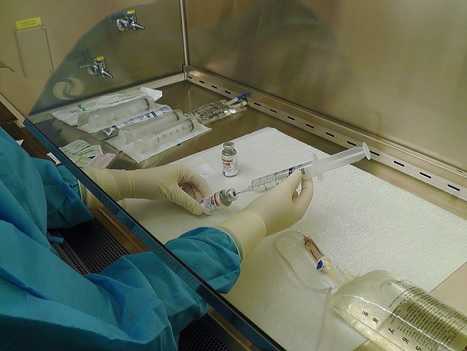HAZARDOUS DRUG EXPOSURES IN HEALTHCARE
Overview
Health care workers who prepare or administer hazardous drugs (e.g., those used for cancer therapy, and some antiviral drugs, hormone agents, and bioengineered drugs) or who work in areas where these drugs are used may be exposed to these agents in the workplace. About 8 million U.S. healthcare workers are potentially exposed to hazardous drugs, including pharmacy and nursing personnel, physicians, operating room personnel, environmental services workers, workers in research laboratories, veterinary care workers, and shipping and receiving personnel.
Exposure to hazardous drugs can result in adverse health effects in healthcare workers. In fact, published studies have shown that workplace exposures to hazardous drugs can cause both acute and chronic health effects such as skin rashes, adverse reproductive outcomes (including infertility, spontaneous abortions, and congenital malformations), and possibly leukemia and other cancers. The health risk depends on how much exposure a worker has to these drugs and how toxic they are. Workers can be protected from exposures to hazardous drugs through engineering and administrative controls, and proper protective equipment.
If you have any questions regarding hazardous drugs please submit them to hazardousdrugs@cdc.gov.
NIOSH List of Antineoplastic and Other Hazardous Drugs in Healthcare Settings, 2016
NIOSH List of Antineoplastic and Other Hazardous Drugs in Healthcare Settings, 2016
DHHS (NIOSH) Publication No. 2016-161 (September 2016)
The National Institute for Occupational Safety and Health (NIOSH) of the Centers for Disease Control and Prevention (CDC) has made updates to its list of hazardous drugs (2016). This list includes drugs reviewed by NIOSH from January 2012 to December 2013. The current proposed additions to the list of hazardous drugs supersede the 2004 list in the NIOSH Alert: Preventing Occupational Exposure to Antineoplastic and Other Hazardous Drugs in Health Care Settings and the 2014 list of hazardous drugs. The format for the 2014 list was revised to include three groups of hazardous drugs: (1) Antineoplastic drugs; (2) Non-antineoplastic hazardous drugs; and (3) Drugs with reproductive effects. The current update (2016) adds 34 drugs and includes a review of the 2004 list.
The review process for the addition of the new listings is described in a Federal Register Notice.
- Page last reviewed: August 25, 2017
- Page last updated: August 25, 2017
- Content source:
- National Institute for Occupational Safety and Health Division of Applied Research and Technology


 ShareCompartir
ShareCompartir
